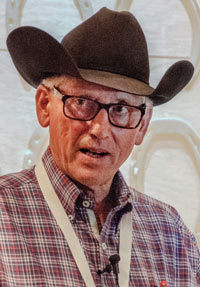If you are old enough to remember, there used to be an ad in Western Horseman magazine for “Professor Beery’s Mail Order Course in Horsemanship.” This came as a set of books that would teach you how to ride a saddle horse, animal husbandry and other subjects.
When I was 12, I ordered it and began to read the series. I eventually reached book five, which was an illustrated course in horse training and shoeing bad horses. It was mostly about ropes and war bridles. Because of Beery’s series, I bought my first horse and brought it back to the farm.
As years went by and I learned more, I ended up getting into other books like Scientific Horseshoeing by William Russell — a book that you can always pick up and learn something from. It was all about the basics for a foundation of horseshoeing.
Over the years, I shod many horse shows — the All American Quarter Horse Congress for 40 years and the World Championship Show for 36 years. If you have spent any time at horse shows, you know what you get as the farrier. Nine times out of 10, you are getting horses that need something to get them to the pen. When a farrier has more opportunities to work with horses like this, I figured there is only one way to go: up.
We shod all kinds of horses back in the day and put them together as best we could. I believe that the first thing to do is create comfort and soundness in a horse, and then next create movement. It comes down to the horse and your knowledge and skill, not what you put on the foot — as long as you know what you are doing. In 1972, I was a young farrier and at my first Congress. There was a horse that was reserve champion. It moved so well that I had to go see how it was shod. I followed it back in the coliseum and asked if I could look at the feet. I picked up the feet and on all four were Diamond Bronco toed and heeled. This was the prettiest moving horse going around in the pen that you would ever see, but it didn’t need fancy shoes. You had to work on those shoes — they weren’t punched right, you had to back punch them and do other modifications. If you could apply some skill to them, you could make them work.
Back then, you couldn’t buy the things you have today. In those early years for me, I probably handmade 75% to 85% of the shoes that today I can buy at any supply shop. From my experiences and working with others, I learned how to change a lot of things. We have benefited from those things that are now available, like adhesives that can help a horse get by. In some ways, these mirages can help you win a world championship if you know how to put it together. The more tools that you have in your arsenal to help a horse along, the better off you will be. And the longer that you shoe horses, the more you can create that stuff.
The Influence of a Farrier
Years ago, I wrote an article for the American Quarter Horse Journal once on halter horses. In it, I wrote that most halter horses don’t need to be shod on the hinds — in fact, I think for a lot of halter horses that don’t have a good topline, a farrier could create a better topline by leaving shoes off the hinds and shoeing the fronts.
After the article was published, I went back to barns and the trainers would say, “We don’t need to shoe that horse on the hinds.” They had picked up on this by reading the article. By doing that article, I think this helped soften up some of the jerking, knocking and pulling that I had to go through as a young person. It wasn’t just that I wrote on improving the horse, there was another thing that influenced this change with the trainers. I also wrote in that article that by not shoeing the hinds, they could save a little bit of money.







